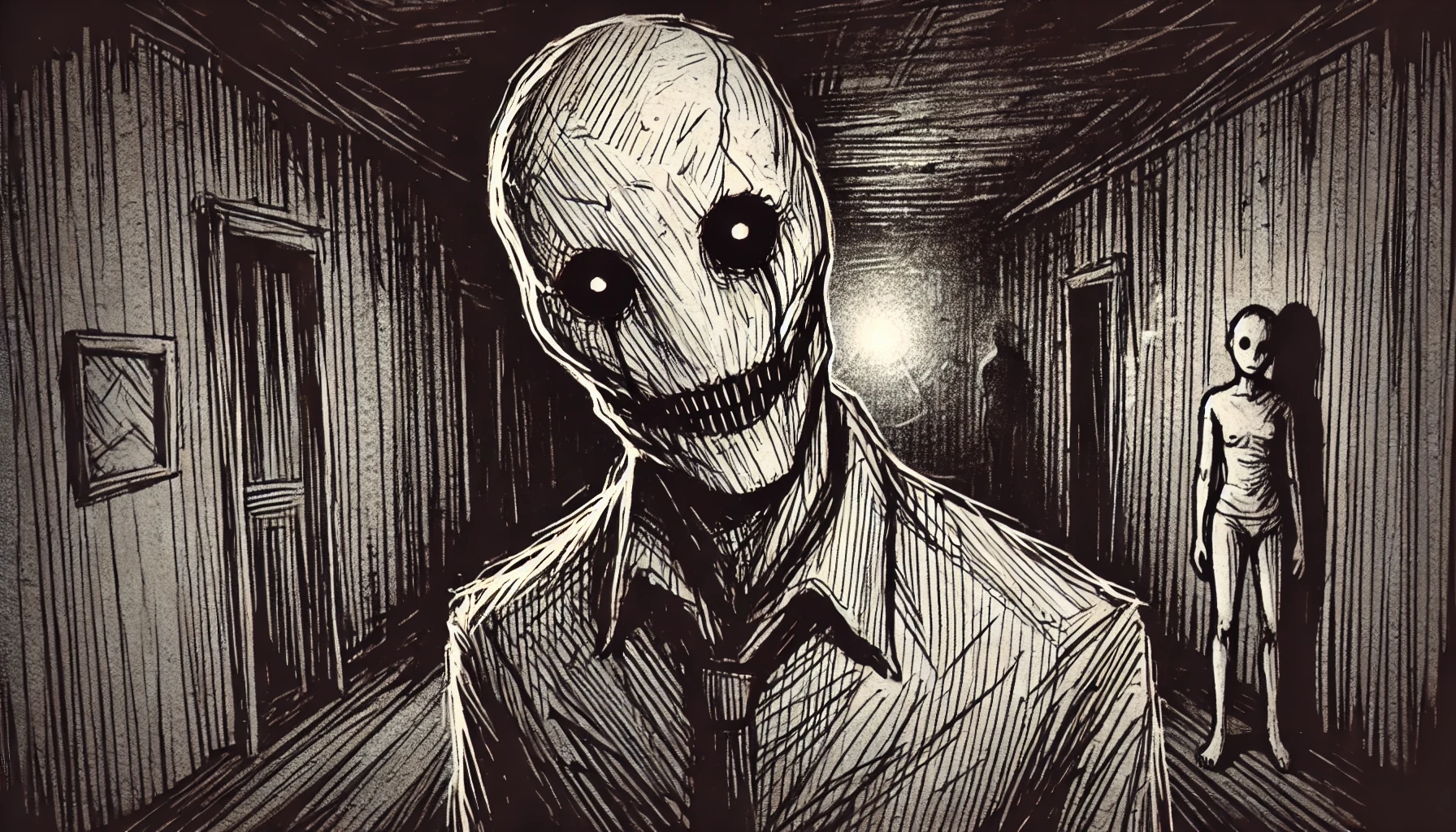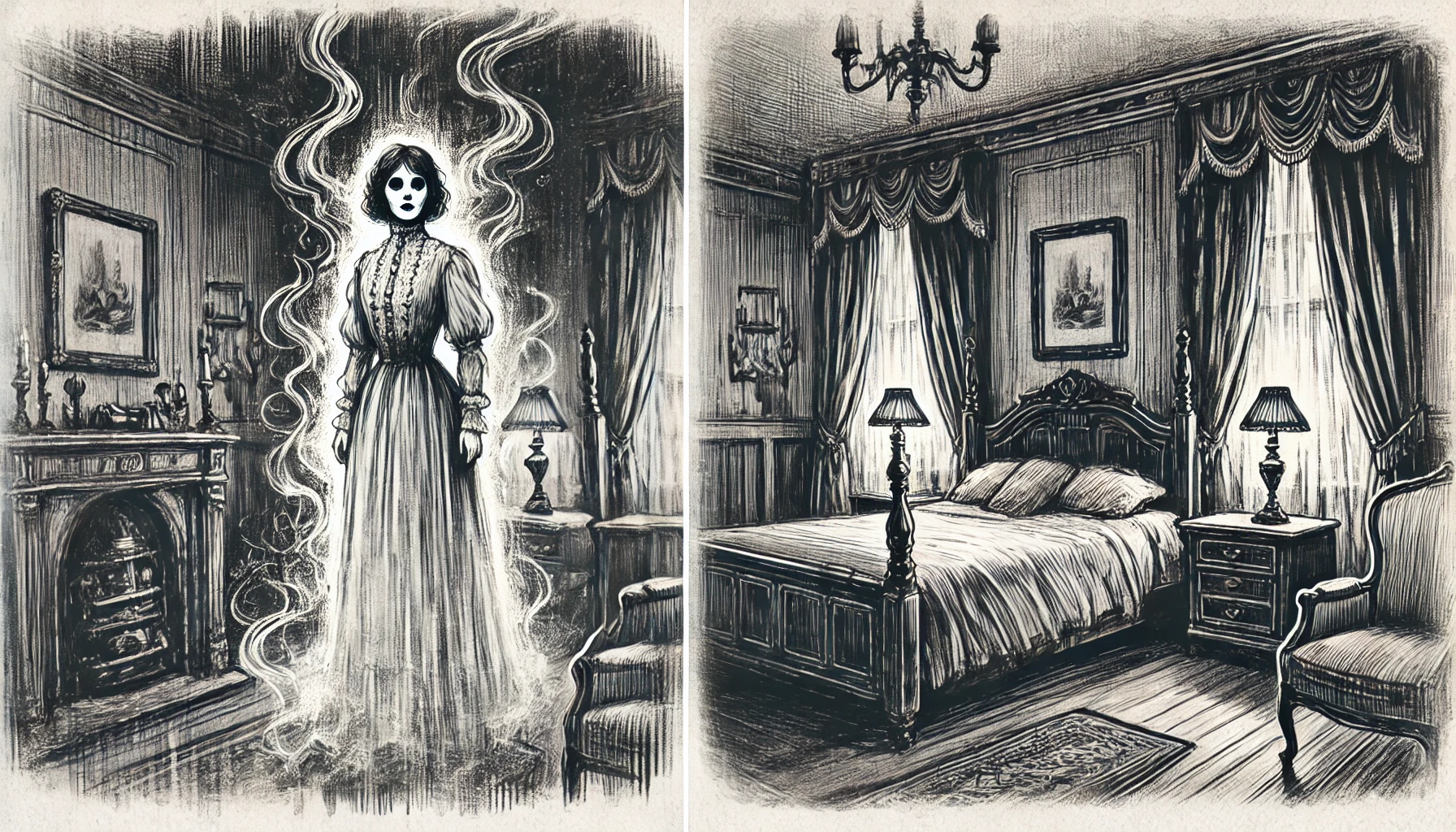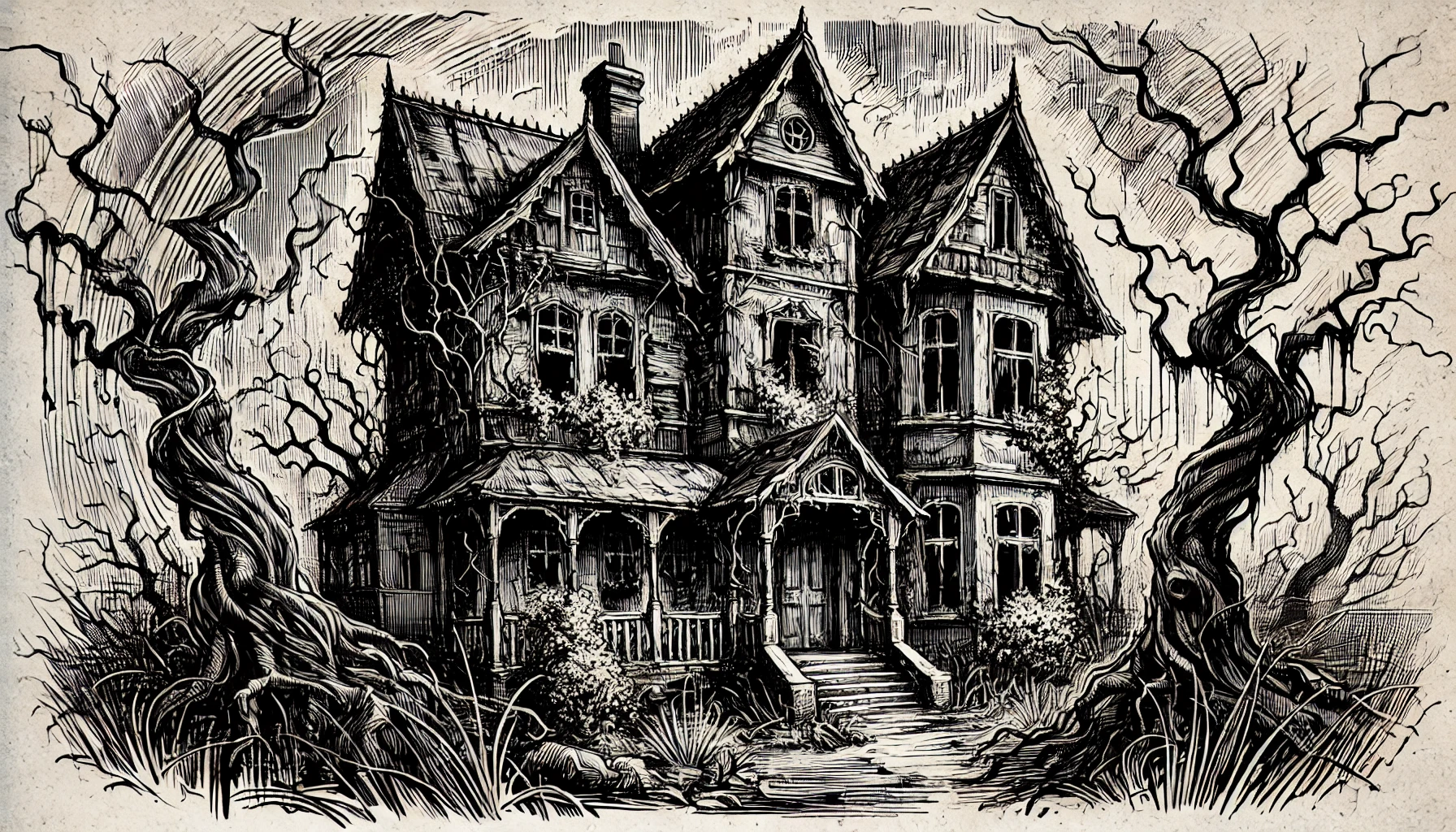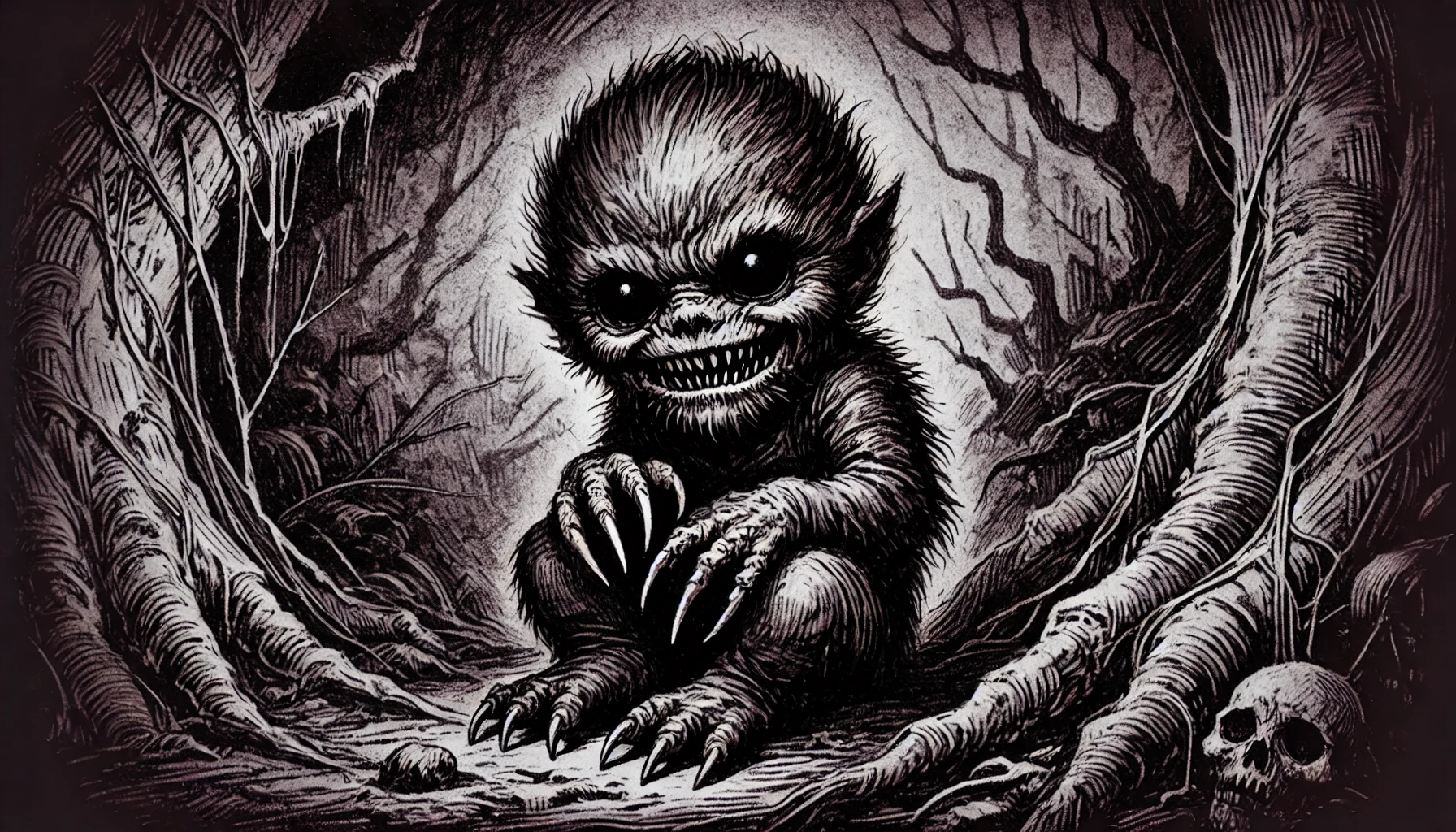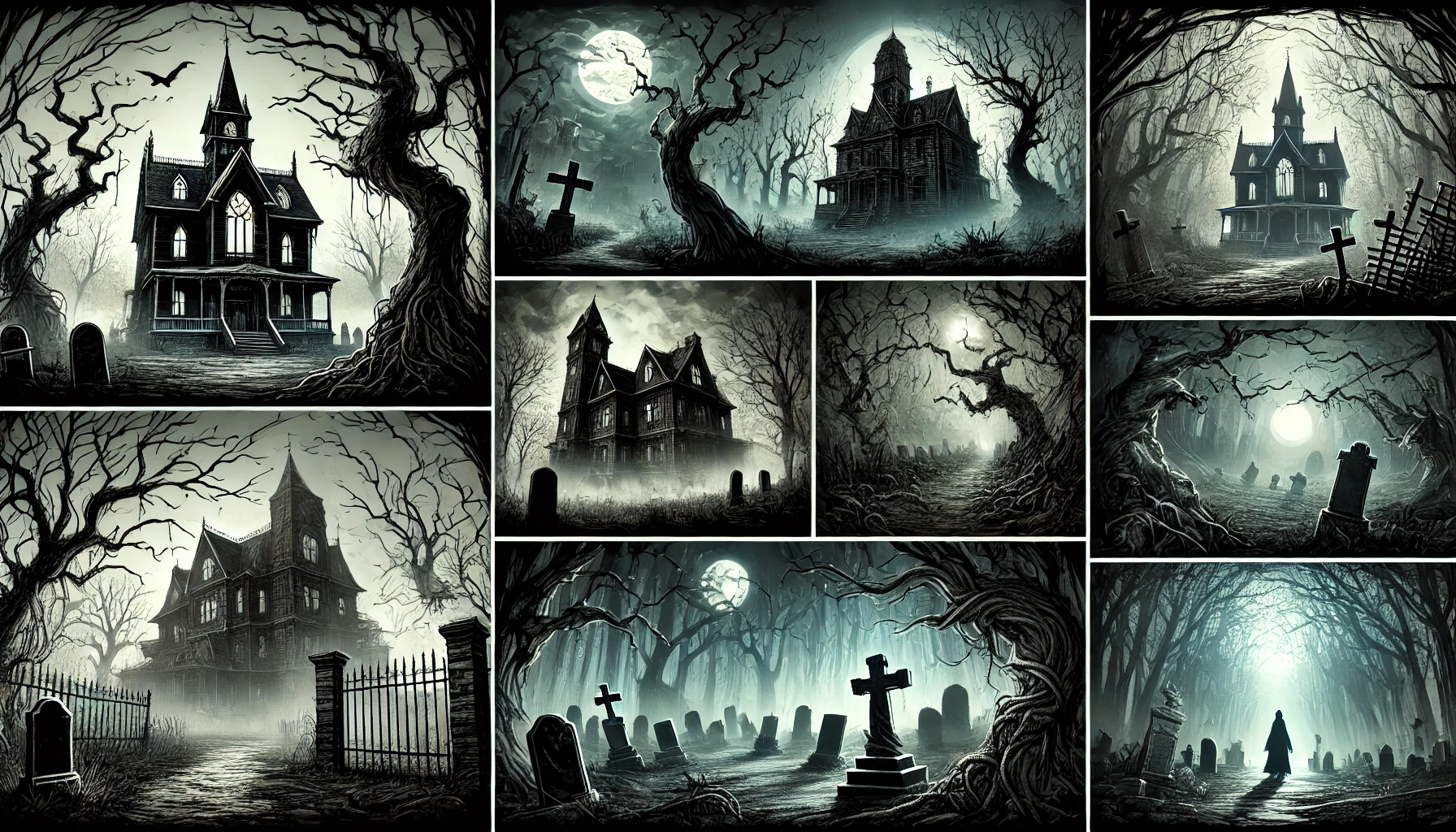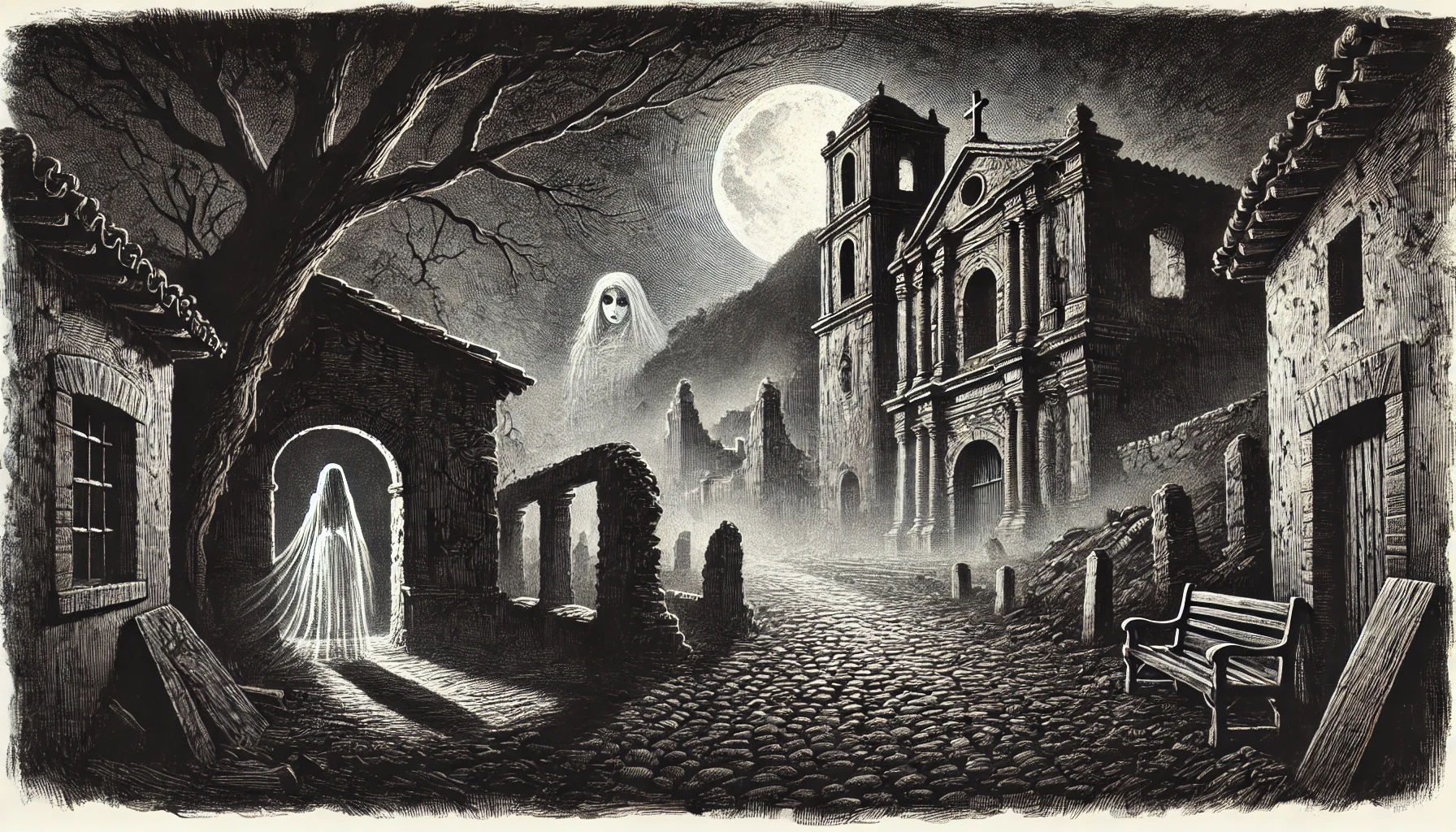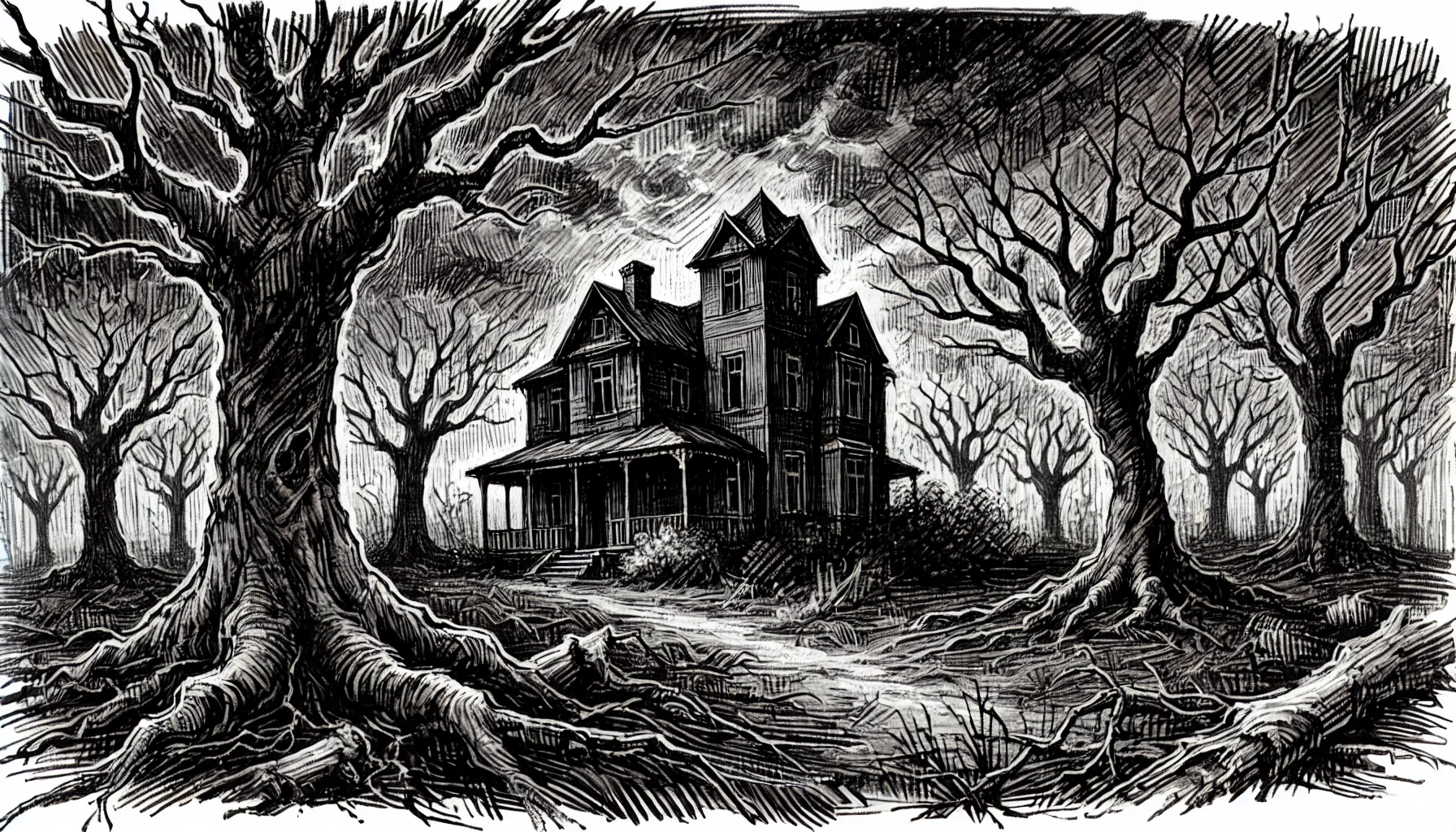Introduction: The Universal Fear of Haunted Houses
The concept of haunted houses is a prevalent theme in various cultures around the world. These eerie surroundings often embody a deep-rooted fear that resonates universally with individuals. As the human mind navigates the complexities of existence, it frequently grapples with feelings of isolation and darkness, which are seamlessly intertwined with the supernatural elements associated with haunted places. The terrifying imagery often portrayed in folklore brings forth narratives that evoke dread, causing individuals to confront their innate fear of the unknown.
This response to haunted houses can be traced back to the psychology of fear, which delves into our primal instincts and reactions. Fear, in its essence, serves as a survival mechanism; however, it becomes particularly pronounced when confronted with environments that seem removed from the safety of community and familiarity. The association of isolation, such as the archetypal ‘house in the middle of nowhere’ referenced in Episode 1 of the Stories Philippines podcast, paints a vivid picture of how solitude heightens the sense of vulnerability, thereby intensifying the fear factor.
In these desolate settings, the imagination can run wild, feeding on anxiety and uncertainty, which leads to a heightened awareness of potential supernatural encounters. Philippine folklore adds another layer to this experience; tales of spirits and hauntings weave into the narrative fabric of society, further amplifying the fear associated with such places. These stories create a framework through which individuals process their anxiety, transforming haunted houses into the ultimate manifestation of their deepest fears. Consequently, the portrayal of these spaces serves not only as a source of entertainment but also as a profound exploration of the human psyche, revealing what it truly means to be afraid in the face of darkness and isolation.
The Psychological Roots of Fear in Haunted Spaces
The experience of fear in haunted houses and other isolated environments often stems from a complex interplay of psychological factors. Individuals who enter these haunted places may encounter various stimuli that elicit a primal fear response. Elements such as darkness, isolation, and eerie surroundings activate innate survival instincts, heightening sensations of vulnerability. This heightened fear response is not only a reaction to environmental factors but also influenced by cultural narratives surrounding the supernatural, such as those explored in Philippine folklore.
Darkness is a prominent feature in many haunted houses, serving as a significant trigger for fear. The absence of light creates uncertainty, prompting the mind to envision potential threats, often magnifying anxiety. Coupled with the unfamiliar or eerie surroundings of haunted spaces, this aspect heightens apprehension, leading individuals to perceive the space as more threatening than it may genuinely be. Isolation further exacerbates this fear; being alone in unfamiliar environments can lead to an overwhelming sense of vulnerability, as individuals grapple with the unknown. In such situations, one’s fears tend to amplify, fueled by a psychological narrative that intensifies the sense of danger.
Additionally, the psychology of fear suggests that our minds are predisposed to search for threats, a process known as hypervigilance. Within the context of haunted houses, this hyperawareness can result in misinterpreting benign stimuli as menacing. For instance, the creaking of old floorboards or the rustle of wind may evoke feelings of dread and paranoia. By understanding these psychological underpinnings, we can begin to appreciate why haunted spaces evoke such intense emotional responses and recognize the role that fear plays in our interactions with haunted houses and the supernatural.
The Impact of Isolation
Isolation is a pivotal factor that intensifies the emotional and psychological experience of fear, particularly in haunted places. When individuals find themselves in a haunted house, especially one situated in seclusion like the eerie surroundings depicted in the first episode, the sensation of vulnerability is markedly heightened. The geographic isolation of such settings, often enveloped by dense forests or remote locations, creates an environment where escape feels unattainable. This inaccessibility amplifies the psychological response to fear, tapping into the fundamental aspects of human anxiety.
The psychology of fear indicates that the unknown often breeds dread, and the combination of isolation and darkness can exacerbate this feeling. In a haunted house, every creak of the old wooden floorboard or shadow cast by a flickering light can evoke a profound sense of impending danger. With no nearby help and an encroaching sense of solitude, individuals are left to confront their fears alone, often leading to heightened anxiety levels. This emotional reaction is deeply rooted in the human psyche and has been explored in various studies that analyze the impact of fear responses in isolated settings.
Furthermore, Philippine folklore often features elements of isolation, where characters encounter supernatural beings in remote locations. The stories reflect a collective understanding of how isolation can unearth deeper fears within individuals, illuminating the human psyche’s vulnerabilities. Such narratives suggest that the fear associated with haunted houses is not merely about the supernatural but also about the emotional weight brought on by solitude and darkness. As isolation wraps its cold grip around those within a haunted house, the overall experience morphs into a chilling interplay between the mind and the environment, highlighting the psychological underpinnings of fear we all share.
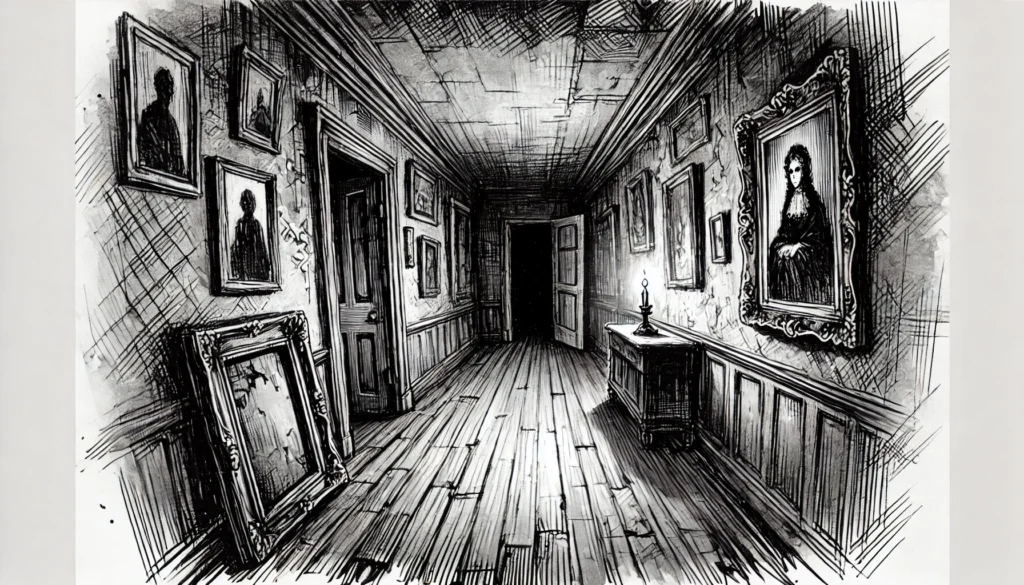
The Power of Darkness
The experience of fear deeply intertwines with the presence of darkness, particularly in haunted houses and eerie surroundings. Darkness serves as a powerful catalyst that heightens emotional responses and amplifies feelings of isolation. In the absence of light, the mind becomes attuned to the whispers of unease, where every creak and shadow transforms into potential threats. This notion appeals not solely to individual fears but also to a collective understanding rooted in various cultural narratives, including numerous haunted places steeped in Philippine folklore.
The fear of the unknown and the unseen is a fundamental aspect of human psychology. When enveloped in darkness, individuals are confronted with their vulnerabilities. The inability to see clearly fosters an environment ripe for imagination and speculation, driving the narrative of supernatural encounters. For instance, within the confines of a dimly lit haunted house, the unidentifiable forms lurking in corners ignite primal fears. Research in the psychology of fear reveals that the mind fills in the gaps left by darkness, feeding into one’s anxieties and ultimately provoking an exaggerated response to stimuli, real or imagined.
Eerie Surroundings and Unsettling Ambiance
Haunted houses and isolated homes frequently evoke a palpable sense of dread, stemming largely from their eerie surroundings and unsettling ambiance. The atmosphere in these locations plays a crucial role in the psychology of fear, making them infamous within both folklore and popular culture. Elements such as unnatural silence and peculiar structures contribute significantly to the feelings of anxiety and trepidation that visitors often experience.
The unsettling ambiance of a haunted house often begins with its architecture. Distorted shapes and strange designs evoke a sense of unease, compelling individuals to question their safety. For instance, homes situated near ominous structures, like a gnarled tree dubbed as “haunted” in some tales, can intensify feelings of fear. This tree, steeped in local Philippine folklore, serves not only as a visually intimidating presence but also as a reminder of the supernatural narratives that linger in such locations.
Isolation further compounds these fears, as individuals find themselves enveloped by darkness and solitude. When one is cut off from civilization, every creak and whisper can amplify anxiety. The sense of being alone within these haunted places can manifest in a visceral response to the darkness, turning ordinary sounds into ominous harbingers of the supernatural. The fear of the unknown looms large, as the mind races with potential horrors lurking just out of sight.
Moreover, the role of natural elements—such as winds rustling leaves or distant animal calls—can create an unsettling soundtrack that enhances an individual’s sense of vulnerability. These auditory aspects of eerie surroundings echo the isolation visited upon those who dare to enter. Together, these factors intertwine to create an environment rife with psychological tension, where even the slightest movement within the darkened corners can provoke a primal reaction to captivate and terrify intruders.
Folklore and Haunted Houses in Philippine Culture
The rich tapestry of Philippine culture is interwoven with stories and beliefs that highlight the significance of haunted houses and eerie surroundings. In this culturally vibrant nation, folklore plays a crucial role in shaping perceptions of the supernatural and influences how individuals respond to fears associated with haunted places. The narrative around these spectral structures often involves figures from Philippine mythology, such as the “aswang” or “kapre,” creatures believed to dwell in the shadows of these isolated homes. These tales create an atmospheric connection between cultural beliefs and haunted houses, imbuing them with an unsettling charm that captivates both locals and tourists alike.
Philippine Folklore and the Supernatural
Philippine folklore is rich with narratives that explore the unknown, particularly through a lens of supernatural encounters often linked to haunted houses and isolated locations. These stories frequently emphasize a cultural understanding of fear, with the eerie surroundings of abandoned structures serving as backdrops for ghostly tales. Among the most renowned entities in these folklores are the kapre and the tiyanak, both of which evoke a profound sense of dread and isolation.
The kapre, depicted as a large tree-dwelling creature, is believed to reside in lonely, dark places and is often associated with tobacco and smoke, symbolizing a lingering presence amidst the shadows. This folklore captures the psychology of fear, where the isolation of the kapre’s habitat evokes an innate anxiety related to darkness and the unknown. Encounters with this being are said to infuse a chilling atmosphere into otherwise mundane settings, transforming them into potentially haunted places where fear becomes palpable.
Conversely, the tiyanak, a creature often described as a restless spirit of an unbaptized child, embodies the fear of neglect and abandonment. The tiyanak’s haunting cries serve as a lure, drawing individuals into isolated areas where they may face unseen horrors. The supernatural element of the tiyanak illustrates a close connection between folklore and the complex dynamics of fear; it is not merely a physical danger but also a psychological manifestation that speaks to deeper societal fears surrounding loss and bereavement.
In the context of haunted houses and supernatural phenomena, these cultural beliefs remind us that stories passed down through generations can significantly shape our understanding of fear and isolation. Thus, engaging with Philippine folklore not only enriches the context of haunted houses but also provides valuable insights into the psychological implications of fear within the community.
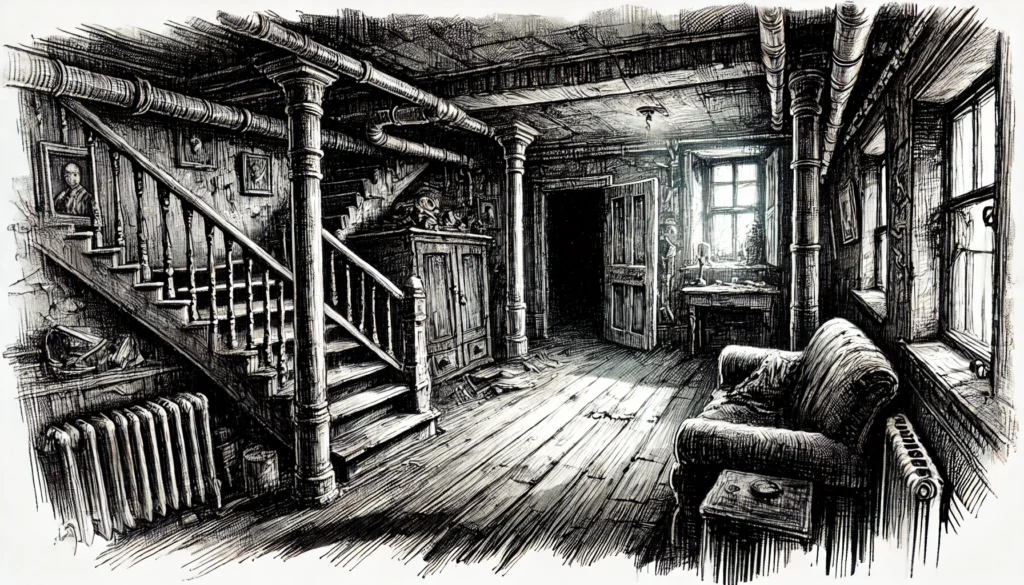
Famous Haunted Places in Philippine Folklore
The Philippines is steeped in rich cultural traditions and folklore that often revolve around the supernatural and the eerie surroundings of haunted places. Among these, ‘Bahay na Pula’, or the Red House, stands out as one of the most infamous locations, embodying a blend of history and fear. This abandoned house is said to be haunted by the spirits of its former inhabitants, stirring feelings of dread and isolation in those who dare to approach. The evocative imagery of its dark, decaying walls fuels local legends that perpetuate its ghostly reputation.
Another notable mention in Philippine haunted folklore is the ‘Balete Drive’ in Quezon City. This tree-lined avenue is often described as a place where the darkness seems to swallow the light, and tales of ghostly apparitions hang in the air like a thick fog. Commuters report feelings of unease and fear while driving through, highlighting the psychological impact that such locations can have on individuals. The blend of isolation and the intent focus on the supernatural elements enhance the overall narrative surrounding these haunted houses.
Furthermore, the cultural significance behind these haunted places provides insight into the psychology of fear. The local populace often recounts stories in gatherings, utilizing the eerie tales as cautionary narratives. Such folklore not only fosters a sense of community but also reflects collective fears and the profound effect of darkness in human consciousness. Whether it is through the legends of ‘Bahay na Pula’ or the haunted tales from Balete Drive, each story contributes to the intricate tapestry of Philippine folklore, emphasizing how fear and the supernatural interact within the cultural psyche, often serving to warn or educate future generations.
The Universal Fear of Haunted Spaces
Throughout history, haunted houses have captivated the imagination of individuals across various cultures, invoking a universal fear rooted in isolation and darkness. These eerie surroundings, often depicted in folklore, serve as settings where supernatural occurrences come to life, allowing people to confront their innermost fears. From the chilling tales of haunted places in the Western world to the rich Philippine folklore surrounding spirits and the afterlife, the themes of fear and isolation find common ground.
The psychological phenomena associated with haunted spaces often explore why individuals are drawn to these locations despite, or perhaps because of, the inherent fear they evoke. Haunted houses symbolize a confrontation with the unknown, where darkness reigns and specters of the past linger. This resonates deeply with the human psyche, as the fear of the supernatural taps into primordial instincts, connecting to feelings of vulnerability and helplessness. When one is surrounded by the isolation of an abandoned building or a secluded house, this fear can be intensified, as the surrounding silence fills the mind with anxious thoughts.
The allure of these haunted locations can be attributed to their ability to fuse reality with the supernatural. The juxtaposition of familiarity and the uncanny creates an enigmatic tension, where the mundane transforms into the extraordinary. As cultures share their unique experiences with haunted houses, they reflect common anxieties and fascinations, emphasizing the enduring significance of fear across different societies. Ultimately, the exploration of haunted spaces reveals a shared psychological landscape, providing insight into how fear can bind cultural experiences, enhancing our understanding of the human attraction to the macabre.
Conclusion: The Anatomy of Fear in Haunted Houses

Throughout the exploration of haunted houses and isolated environments, it becomes evident that various elements contribute to the profound sense of fear experienced in these settings. One of the most striking factors is the inherent isolation that these haunted places often embody. Nestled in remote locations, they invoke feelings of vulnerability, as individuals grapple with the unnerving reality that help may be far away. This emotional response is further exacerbated by the darkness that envelops these regions, with shadows lurking in every corner and playing tricks on the mind.
The eerie surroundings, a hallmark of haunted houses, serve to amplify the psychological effects of fear. The creaking floors, cold drafts, and unexpected noises create a sensory experience that keeps individuals on high alert. Such stimuli can trigger the fight-or-flight response, causing a surge of adrenaline as our brains attempt to discern between reality and the supernatural. The psychology of fear informs our understanding of how the human mind reacts to these conditions, as it draws upon deep-seated cultural narratives and folklore, particularly in the context of Philippine storytelling where tales of spirits and the supernatural abound.
Furthermore, the concept of fear extends beyond mere physical threats; it taps into existential anxieties about the unknown. The ‘house in the middle of nowhere’ presented in the Stories Philippines podcast exemplifies this notion, as it not only represents a physical space but also a psychological state where individuals confront their deepest fears. Ultimately, it is the combination of isolation, darkness, and eerie elements that intertwine with cultural narratives to create a compelling, albeit unsettling, experience that resonates deeply with the psyche. Understanding these facets enables a richer appreciation of the fear induced by haunted houses and their profound impact on human emotion.


